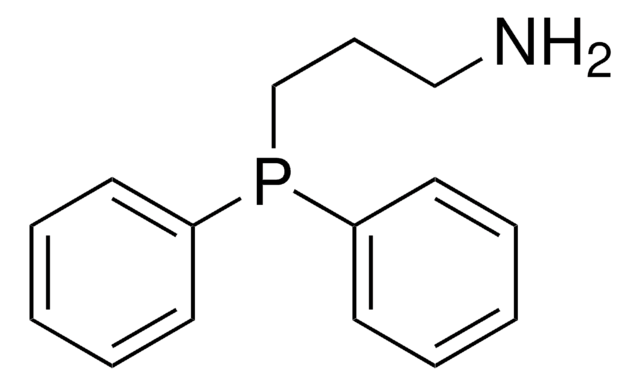52411
Heptafluorobutyric acid
suitable for ion chromatography, ≥99.5% (GC)
동의어(들):
Edman Reagent No. 3, HFBA, Perfluorobutyric acid
About This Item
추천 제품
vapor density
7 (vs air)
Quality Level
vapor pressure
~10 mmHg ( 25 °C)
설명
anionic
분석
≥99.5% (GC)
형태
liquid
유통기한
limited shelf life, expiry date on the label
기술
ion chromatography: suitable
refractive index
n20/D 1.3 (lit.)
bp
120 °C/755 mmHg (lit.)
density
1.645 g/mL at 25 °C (lit.)
양이온 미량물
Al: ≤0.5 mg/kg
Ba: ≤0.01 mg/kg
Bi: ≤0.01 mg/kg
Ca: ≤2 mg/kg
Cd: ≤0.01 mg/kg
Co: ≤0.01 mg/kg
Cr: ≤0.01 mg/kg
Cu: ≤0.01 mg/kg
Fe: ≤0.1 mg/kg
K: ≤0.5 mg/kg
Li: ≤0.01 mg/kg
Mg: ≤1 mg/kg
Mn: ≤0.01 mg/kg
Mo: ≤0.01 mg/kg
Na: ≤3 mg/kg
Ni: ≤0.01 mg/kg
Pb: ≤0.01 mg/kg
Sr: ≤0.01 mg/kg
Zn: ≤0.05 mg/kg
SMILES string
OC(=O)C(F)(F)C(F)(F)C(F)(F)F
InChI
1S/C4HF7O2/c5-2(6,1(12)13)3(7,8)4(9,10)11/h(H,12,13)
InChI key
YPJUNDFVDDCYIH-UHFFFAOYSA-N
유사한 제품을 찾으십니까? 방문 제품 비교 안내
애플리케이션
결합
관련 제품
신호어
Danger
유해 및 위험 성명서
Hazard Classifications
Skin Corr. 1A
Storage Class Code
8A - Combustible corrosive hazardous materials
WGK
WGK 3
Flash Point (°F)
Not applicable
Flash Point (°C)
Not applicable
개인 보호 장비
Faceshields, Gloves, Goggles, type ABEK (EN14387) respirator filter
이미 열람한 고객
문서
LC/LC-MS method identifies 8 aminoglycosides in pork using Discovery® DSC-18 SPE and Ascentis® Express C18 UHPLC, per Chinese standards.
자사의 과학자팀은 생명 과학, 재료 과학, 화학 합성, 크로마토그래피, 분석 및 기타 많은 영역을 포함한 모든 과학 분야에 경험이 있습니다..
고객지원팀으로 연락바랍니다.











